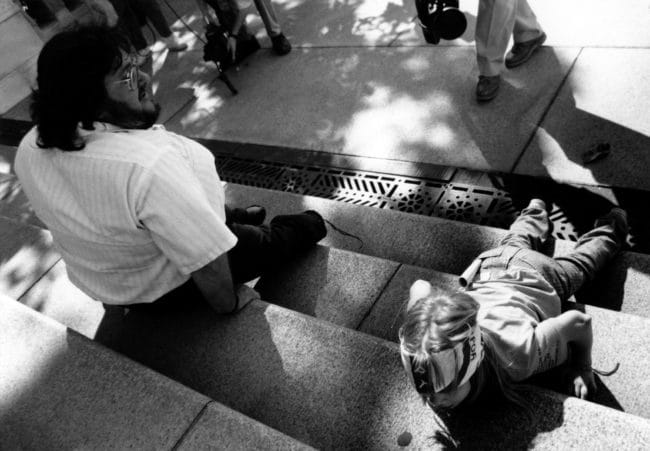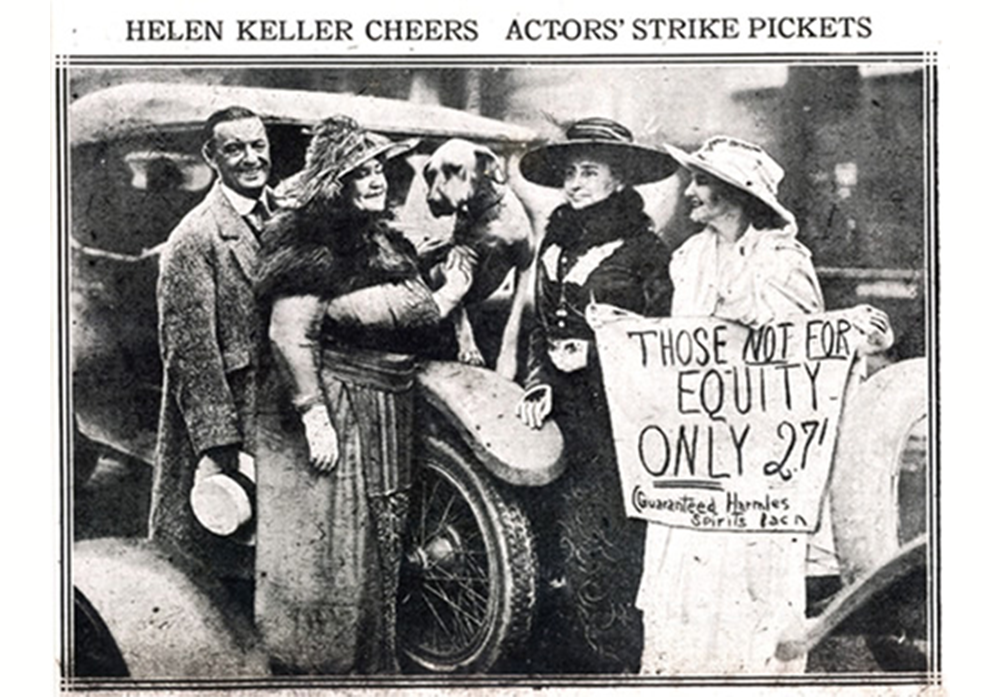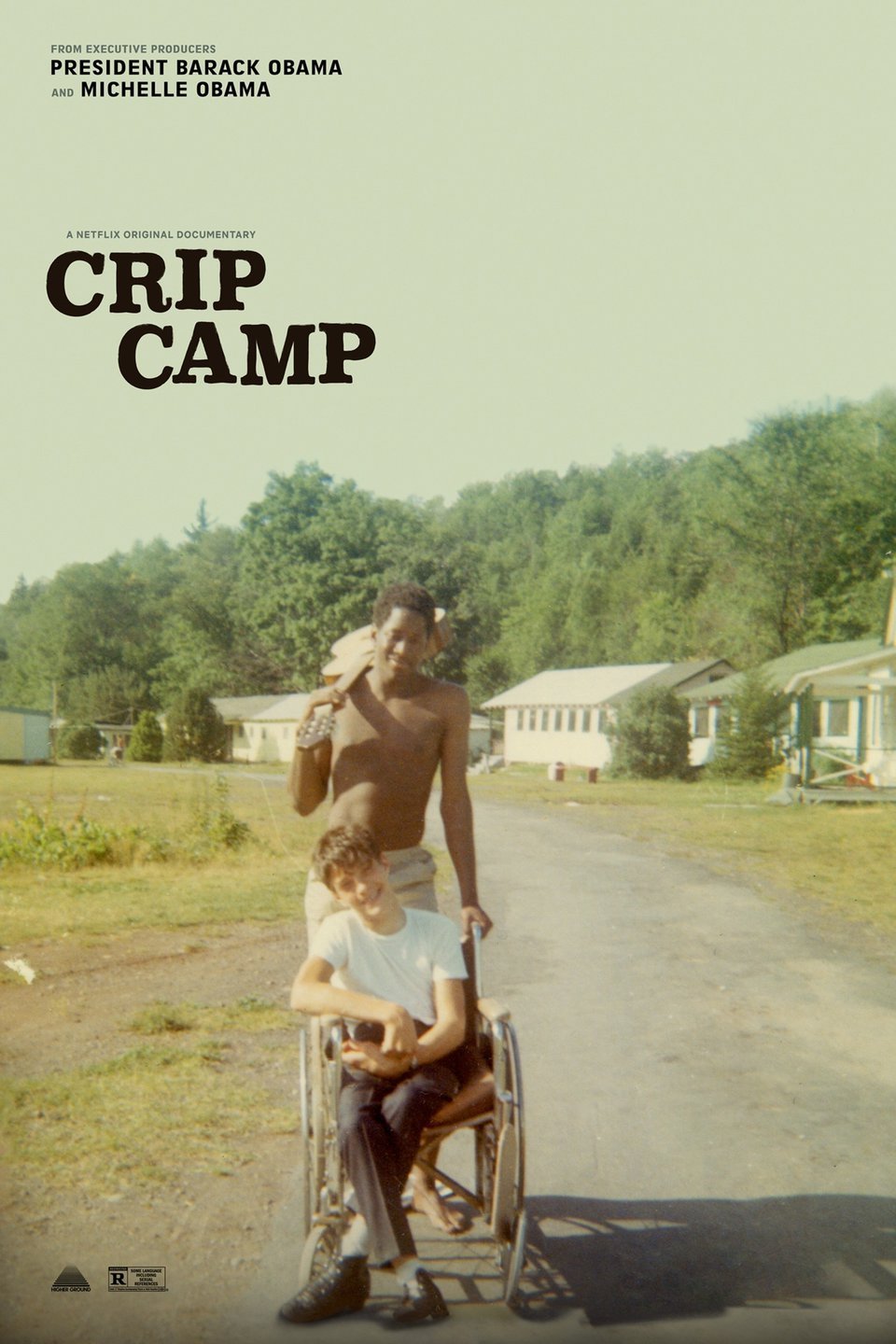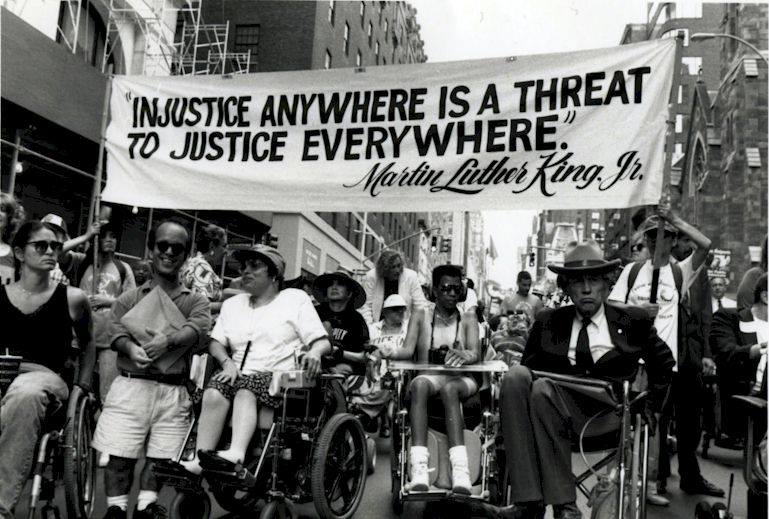In the winter of 1990, when the Congressional legislation to turn a proposed Americans with Disabilities Act into law stalled in the House Committee on Public Works and Transportation, hundreds of concerned disability rights activists and others from the affected community descended on Washington, D.C. There, they joined with local activists at the White House and at the U.S. Capitol Building to protest the efforts within government to stall and stop the Act from passing.

Jennifer Keelan crawls up the steps of the U.S. Capitol on March 12, 1990. Source: Tom Olin/The Ability Center
The most memorable moment in the winter’s activism happened on March 12, 1990, when dozens of these protestors at the Capitol abandoned their mobility aids and began to climb, crawl, and edge up the steps to the top of the west Capitol entrance on the National Mall. Some climbing on their own and some climbing with help from friends and family, they were cheered on by allies, onlookers, and the press.
This direct action, which forced Congress to see them, is known to history as the Capitol Crawl. An entry on disability history from Minnesota’s state disability office describes the day’s events:
This protest, that came to be known as the “Capitol Crawl”, was intended to openly illustrate the struggles that people in the disabilities communities faced and spurred Congress to pass the ADA. About 1,000 other protesters watched as members of ADAPT (Americans Disabled for Accessible Public Transit, now known only as ADAPT) threw themselves out of their chairs and began their crawl. Together, the march and the crawl comprised one of the largest disability direct actions to date.
The late Michael Winter, former Executive Director of the Berkeley Center for Independent Living, contributed his reflections on the “Capitol Crawl” to ADAPT’s 25th Anniversary “I Was There Series” of firsthand accounts:
Some people may have thought it was undignified for people in wheelchairs to crawl in that manner, but I felt that it was necessary to show the country what kinds of things people with disabilities have to face on a day-to-day basis. We had to be willing to fight for what we believed in.
Congress was forced to respond. The bill passed through the House and Senate and was signed into law on July 26, 1990.
Jennifer Keelen Recalls the Crawl
Additional Resources
 Learn more about the history of the ADA, disability activism, and the Capitol Crawl from the documentary Crip Camp.
Learn more about the history of the ADA, disability activism, and the Capitol Crawl from the documentary Crip Camp.
Equal Access Commission article about the Capitol Crawl highlights the words of a woman who participated in the protest:
I want my civil rights. I want to be treated like a human being.
Story map, The Fight For Accessibility: Disability Rights Activists and the Americans with Disabilities Act.
A picture book, All the Way to the Top: How One Girl’s Fight for Americans with Disabilities Changed Everything by Annette Bay Pimentel with illustrator Nabi Ali.












Twitter
Google plus
LinkedIn